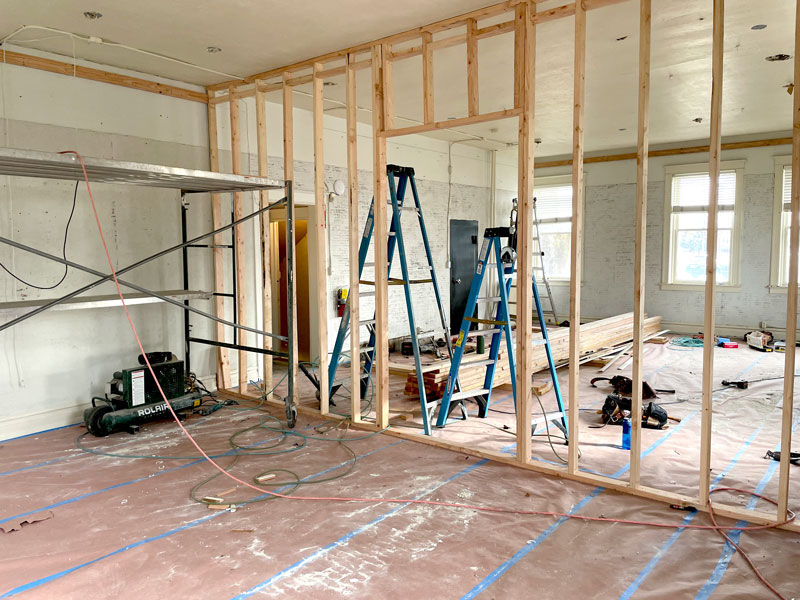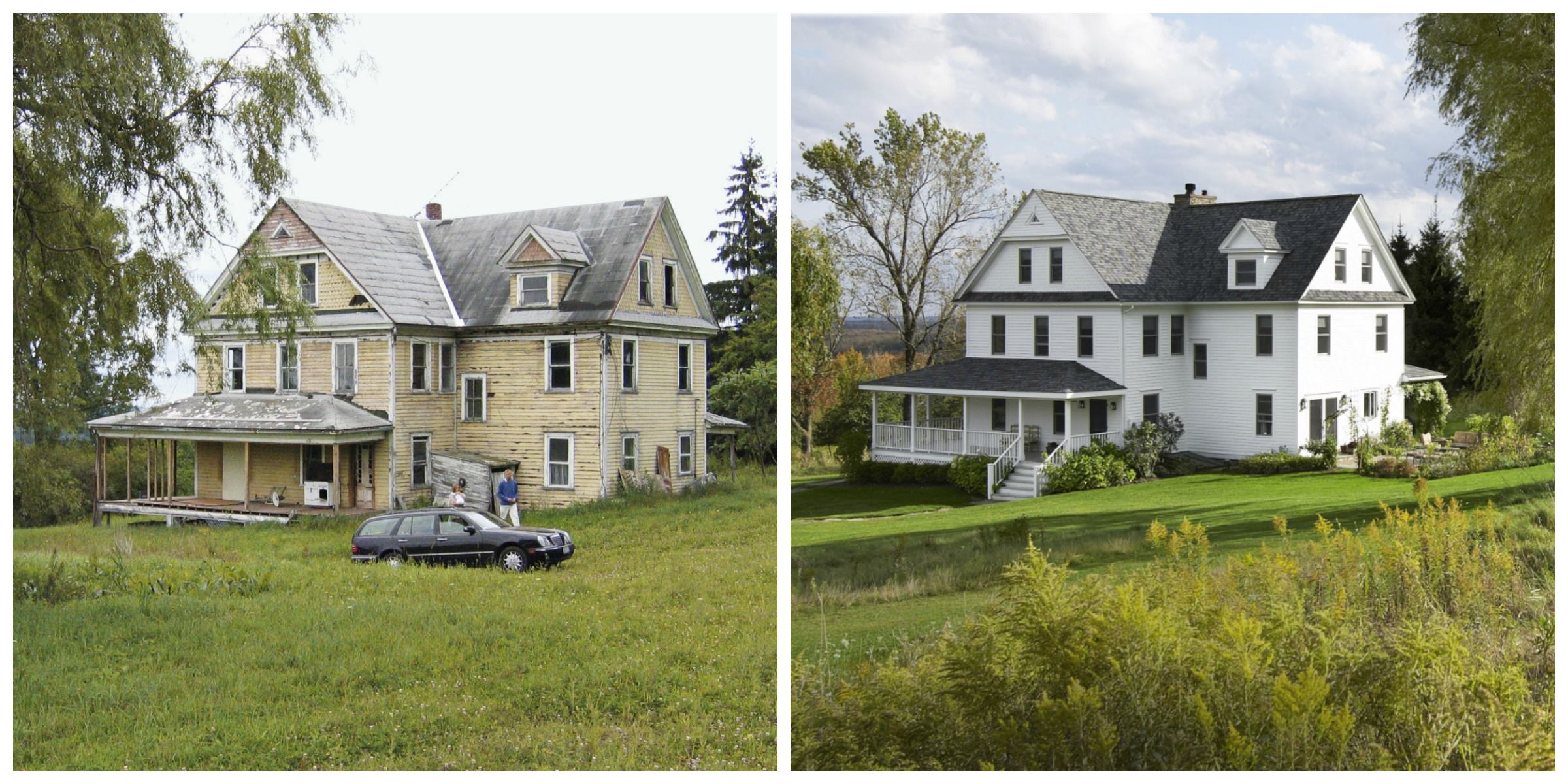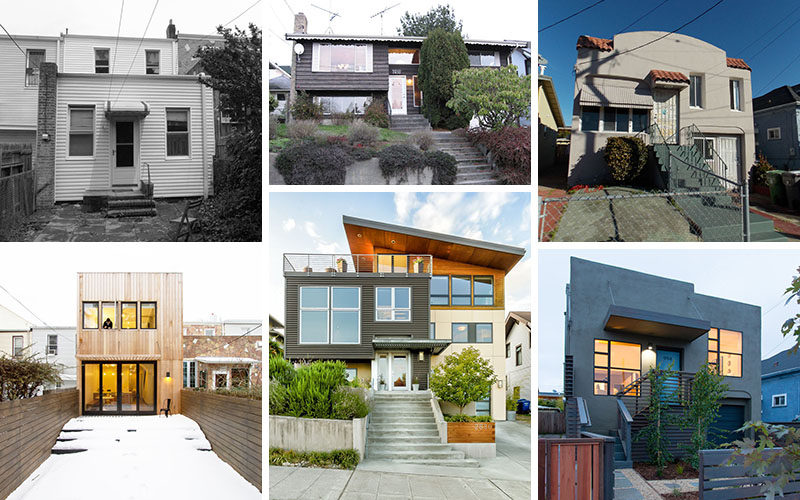Renovation Sparks New Vitality - Transforming Spaces And Revitalizing Communities
Renovation is a powerful tool that can breathe new life into old and tired spaces. It brings forth a sense of vibrancy and renewal. Whether it's an aging building, a neglected neighborhood, or a historical landmark, the process of renovation sparks new vitality that resonate far beyond the physical realm.
Author:George EvansAug 18, 202358.3K Shares1.3M Views

Renovation is a powerful tool that can breathe new life into old and tired spaces. It brings forth a sense of vibrancy and renewal. Whether it's an aging building, a neglected neighborhood, or a historical landmark, the process of renovation sparks new vitalitythat resonate far beyond the physical realm.
Some of the advantages of upgrading your property include completing a well-deserved renovation to the area you call yours and enhancing the resale value of your property.
Before you start calling commercial painting contractors or knocking down walls, you're undoubtedly curious about the advantages of a renovation. Is it really worthwhile to go to the trouble of hunting up professional paint contractors in your area? The answer is, in fact, yes. Renovations can have some unexpected advantages.
Choose someone that has the necessary expertise and experience for the work and provides dependable remodeling services. Before commencing the remodeling job, decide what you want and set a reasonable budget.
In this article, we will explore the concept of renovation sparks new vitality, exploring its impact on spaces, communities, and the people who inhabit them.
Renewed Aesthetics And Functionality
In this section, we will explore how renewed aesthetics and functionality contribute to the transformation of spaces and enhance the overall living experience for residents and users.
Reimagining Visual Appeal
Renovation projects provide an opportunity to reimagine the visual appeal of a space. Outdated facades, worn-out interiors, and dilapidated structures can be rejuvenated through thoughtful design and creative interventions.
By updating exterior facades, incorporating modern architectural elements, and enhancing landscaping, a formerly uninspiring space can be transformed into an eye-catching and attractive destination.
The rejuvenated visual appeal not only boosts the property's value but also positively impacts the surrounding neighborhood, attracting new interest and investment.
Modernizing Interior Spaces
Renovations often focus on modernizing interior spaces to meet the evolving needs of residents and users. Outdated layouts can be reconfigured to create open and functional living spaces that promote a sense of airiness and connectedness.
Improved floor plans, updated flooring, and contemporary fixtures contribute to a more comfortable and functional living experience. Kitchens and bathrooms are often given special attention, as they are essential areas that significantly impact daily life.
Enhancing Energy Efficiency
Functionality in renovation goes beyond aesthetics and involves enhancing energy efficiency. Upgrading insulation, windows, doors, and HVAC systems can lead to significant energy savings and a more comfortable living environment.
By incorporating energy-efficient technologies and sustainable materials, renovation projects align with green building practices, contributing to a more environmentally responsible and cost-effective approach to modern living.
Preservation Of History And Identity
Restoring Architectural Heritage
Renovation projects often involve restoring and preserving architectural heritage. Historic buildings may have unique features, decorative elements, or architectural styles that reflect the era in which they were built.
Renovations carefully address these historical attributes, bringing them back to their original glory while simultaneously making necessary structural improvements to meet contemporary building codes and safety standards.
Repurposing And Adaptive Reuse
The practice of adaptive reuseis gaining prominence in renovation projects, especially when it comes to historic landmarks or older buildings. Rather than demolishing these structures, adaptive reuse involves repurposing them for new functions.
For example, a historic factory might be converted into loft apartments, a disused church transformed into an event space, or an old school repurposed into a community center. Adaptive reuse not only preserves the building's historical significance but also breathes new life into the space, making it relevant and functional for modern use.
Building Community Identity
Historic landmarks and neighborhoods play a pivotal role in building community identity. They are often focal points of pride and cultural significance for local residents. Renovation projects that preserve history and identity contribute to a shared sense of heritage and belonging. By maintaining these landmarks, communities can celebrate their past while embracing a sense of continuity and shared history that transcends generations.
Sustainable And Eco-Friendly Improvements
In this section, we will explore the significance of sustainable and eco-friendly improvements in renovation projects and their positive impact on both the environment and the well-being of communities.
Green Building Practices
Renovation projects that prioritize sustainability often incorporate green building practices. These practices aim to minimize the environmental impact of construction and building operation.
For instance, using recycled and locally sourced materials reduces the need for transportation, thereby lowering greenhouse gas emissions. Additionally, adopting renewable energy sources, such as solar panels or geothermal systems, contributes to a more sustainable energy footprint for the renovated space.
Energy Efficiency Upgrades
Energy efficiency is a key consideration in sustainable renovation. Upgrading insulation, windows, and doors helps reduce energy consumption by improving the building's thermal performance.
High-efficiency HVAC systems, energy-efficient lighting, and smart controls further contribute to energy savings and a reduced carbon footprint. By incorporating these improvements, renovation projects can significantly decrease energy consumption and lessen the overall impact on the environment.
Water Conservation Measures
Water conservation is another critical aspect of sustainable renovation. Implementing low-flow fixtures, water-efficient appliances, and rainwater harvesting systems help reduce water consumption and mitigate strain on local water resources. Proper landscape design and irrigation techniques also play a role in preserving water resources while creating an eco-friendly and visually appealing environment.
Economic Revitalization Through Renovation Projects
In this section, we will explore the role of economic revitalization in renovation projects and its positive impact on the local economy and community development.
Attracting Investment
Renovated spaces have a strong appeal to investors and businesses. Modernized buildings and vibrant neighborhoods attract companies looking for well-designed office spaces, retail outlets seeking attractive storefronts, and developers seeking high-demand residential properties. The increased interest from investors leads to a rise in property values, generating economic growth and potential revenue for the local economy.
Job Creation
Renovation projects contribute to job creation in various sectors. The construction industry experiences a boost in employment as skilled workers are needed to carry out the renovations.
Additionally, the increased economic activity resulting from the revitalization attracts businesses, creating more job opportunities in retail, hospitality, and service industries. The creation of jobs enhances the quality of life for residents and promotes social and economic stability within the community.
Tourism And Cultural Attraction
Renovated spaces, particularly those that preserve historical and cultural landmarks, can become attractive tourist destinations. Renovations of historical buildings, museums, or iconic landmarks can draw visitors from near and far, boosting tourism revenue and promoting the area's unique cultural identity. The influx of tourists also supports local businesses, such as restaurants, hotels, and souvenir shops, further stimulating the local economy.
Social And Community Impact
In this section, we will explore the social and community impact of renovation projects and how they contribute to fostering connections, empowering residents, and creating a sense of pride and belonging.
Strengthening Social Cohesion
Renovation projects often involve collaboration between architects, contractors, local authorities, and community members. The engagement and participation of residents in the planning and decision-making process foster a sense of social cohesion and shared responsibility.
As residents see their input and ideas incorporated into the project, a stronger sense of community ownership and pride emerges, creating a more connected and cohesive neighborhood.
Creating Gathering Spaces
Renovated spaces, especially those designed with community interaction in mind, become gathering points for residents. Public spaces, parks, community centers, and cultural venues that have been revitalized can host events, celebrations, and activities that bring people together.
These gathering spaces provide opportunities for social interaction, cultural exchange, and community bonding, enriching the overall quality of life for residents.
Empowering Local Initiatives
Renovation projects can act as catalysts for local initiatives and grassroots efforts. As communities witness the positive changes brought about by renovation, they may feel inspired to initiate their own projects to improve other aspects of the neighborhood.
This empowerment encourages residents to take an active role in shaping their community's future, leading to a greater sense of agency and pride in their neighborhood.
Encouraging Creativity And Innovation
In this section, we will explore how renovation encourages creativity and innovation, pushing the boundaries of design and transforming spaces in remarkable ways.
Adaptive Reuse
Renovation projects often involve adaptive reuse, where old structures are repurposed for new functions. This approach challenges designers to reimagine spaces and transform them to meet contemporary needs.
An old factory may become a vibrant loft apartment, a disused church might be transformed into a stylish event venue or an abandoned warehouse could turn into a trendy co-working space. Adaptive reuse celebrates the potential of existing structures and fosters innovation in space utilization.
Integrating Sustainable Design
Sustainability and innovation often go hand in hand in renovation projects. Designers and architects incorporate sustainable design principles, such as energy efficiency, passive heating and cooling, and the use of recycled materials. The integration of green building practices pushes the boundaries of sustainable architecture, creating spaces that are eco-friendly, resource-efficient, and visually appealing.
Reimagining Public Spaces
Renovation projects offer a chance to reimagine public spaces, transforming them into engaging and interactive environments. Creative urban design, innovative landscape architecture, and art installations can inject new life into parks, plazas, and streetscapes. These reimagined public spaces become inviting destinations that foster community interaction and cultural exchange.
Blending Historic And Modern Elements
Preserving historical landmarks while infusing modern elements is an innovative approach to renovation. Designers often seek to strike a delicate balance between old and new, creating spaces that celebrate heritage while embracing contemporary aesthetics. The blend of historic charm with modern functionality results in unique and captivating environments that tell a compelling story of past and present.
People Also Ask
What Is The Impact Of Renovation On Communities?
The renovation has a significant impact on communities by sparking new vitality. It revitalizes old and tired spaces, creating renewed aesthetics, and improving functionality. Moreover, renovation preserves historical identity, encourages social cohesion, and fosters a sense of pride and connection among residents.
How Does Renovation Contribute To Economic Revitalization?
Renovation projects can act as catalysts for economic revitalization. Upgrading and rejuvenating spaces attract new businesses, investors, and tourists. The increased interest leads to rising property values and greater economic activity in the area.
What Are The Environmental Benefits Of Renovation?
Renovation offers environmental benefits through sustainable and eco-friendly improvements. By integrating green building practices, energy-efficient technologies, and eco-friendly materials, renovation projects reduce the environmental impact and promote a more sustainable future.
How Does Renovation Affect The Emotional Well-being Of People?
Renovation can positively impact emotional well-being. For property owners, seeing their space rejuvenated evokes feelings of pride and satisfaction. For residents, witnessing positive changes in their neighborhood instills hope and optimism for the future, leading to increased community engagement and social connections.
How Does Renovation Encourage Creativity And Innovation?
Renovation projects encourage creativity and innovation in design and construction. Architects and designers have the opportunity to experiment with adaptive reuse, repurposing old structures for new functions, and integrating cutting-edge design concepts. This innovation inspires professionals in the industry to explore new possibilities and push the boundaries of design in renovation projects.
Conclusion
Renovation is a transformative process that goes beyond mere construction and restoration. Renovation sparks new vitality into spaces, breathes life into communities, and connects people to their past while embracing the future.
By embracing sustainable practices, preserving history, encouraging innovation, and fostering a sense of community ownership, renovation projects can be agents of positive change, contributing to the overall well-being of individuals and revitalizing the places they call home.
As cities and neighborhoods evolve, renovation stands as a testament to the enduring spirit of progress and transformation that keeps communities vibrant and thriving for generations to come.

George Evans
Author
George Anderson, an exceptional architectural designer, envisions and brings to life structures that transcend the realm of imagination. With an unwavering passion for design and an innate eye for detail, George seamlessly blends form and function, creating immersive spaces that inspire awe.
Driven by a deep appreciation for the interplay of space, light, and materials, George's innovative approach redefines the possibilities of architectural design. His visionary compositions leave an indelible mark, evoking a sense of wonder and transforming the built environment.
George Anderson's transformative designs and unwavering dedication continue to shape the architectural landscape, pushing the boundaries of what is possible and inspiring generations to come.
Latest Articles
Popular Articles

